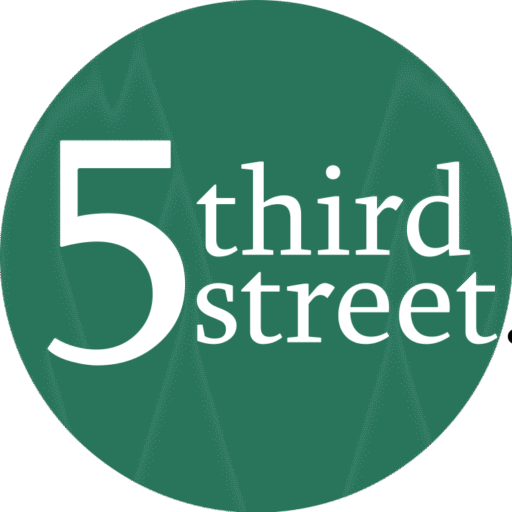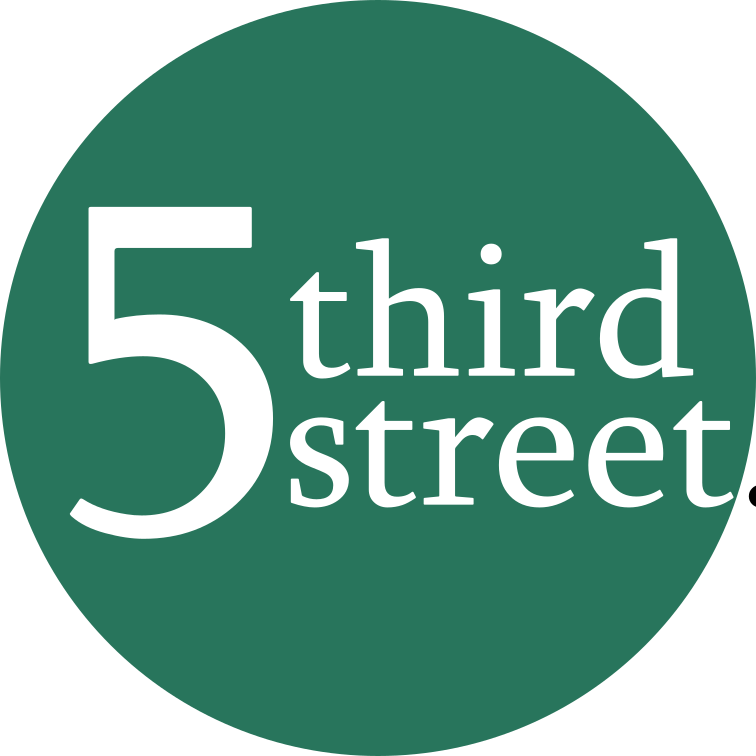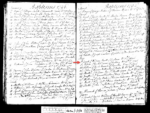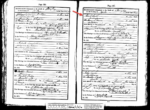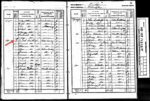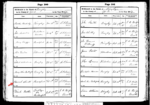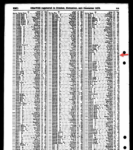Enoch and Hannah
Panorama of Bingley. Taken from the top of Cottingley Cliffe Road looking North. Weather conditions were slightly hazy. Bradford & Bingley Headquarters can be seen at the foot of the western hill. The tower blocks can be seen on the eastern side. the new bypass can be seen in the central foreground. The way the valley constricts can be seen behind the Bradford & Bingley HQ. MGSpiller 15/5/5.
The span of Enoch and Hannah Smith’s lives covers nearly the entire nineteenth century. In the nineteenth century, Britain became the world’s first industrial society. It also became the first urban society. By 1851 more than half the population lived in towns.
Enoch Smith, the oldest son of William and Jane Smith, was born on April 5, 1798. He was baptized at the parish church of All Saints in Bingley on May 5, 1798. According to their website, “All Saints is the parish church of Bingley, a beautiful market town in West Yorkshire. It is an ancient church which has served the congregation and people of Bingley for over a thousand years.” Check out All Saints’ website for more information.
Enoch married Hannah Moore on July 10, 1820. The wedding was held at All Saints. The parish registry shows:
“Enoch Smith of this Parish, husbandman, and Hannah Moore of this Parish, Spinster, were married in this church by Banns with the consent of parents this 10th day of July in the year One thousand Eight Hundred and 20 by me C Wharton, Curate”.
The fact that Enoch gives his occupation as husbandman (farmer) is of some interest. It tells us that in 1820 he had not yet gone to work in the mill. We know that his father was a butcher and his grandfather raised pigs, so Enoch at this point in his life is continuing in the family tradition of living off the land. During the nineteenth century the factory system gradually replaced the system of people working on the farm, in their own homes, or in small workshops. In England the textile industry was the first to be transformed. By the 1841 census we’ll see that Enoch has moved into the factory to make his living.
It is also of some interest to note that the registry indicates by “mark” that neither Enoch, Hannah, nor the witness Benjimin Sunderland was able to sign their names. The other witness, Thomas Smith, apparently was able to sign his name.
At the time of the 1841 census, Enoch, aged 40, was living with his family on Rycroft Road in Bingley. In the twenty-one years since their marriage Enoch Smith and Hannah Moore Smith had eight children; William now age 20; Ellen, 18; Thomas, 15; Dinah,14; Margaret,11; Enoch, 6; Joseph, 4; and Robert, age 2 months. It is Robert, my great grandfather, who will, forty years later, bring his family to America. Enoch’s occupation was wool comber as was his son William’s. Daughters Ellen and Dinah and son Thomas listed their occupations as “cotton factory.”
The 1851 census has Enoch and his family living on Wapping Road in Bradford with four children living at home–Thomas, age 23; Enoch, 17; Joseph, 14; and Robert, 13. Also living with the family are Enoch and Hannah’s daughter Ellen and her husband, Joseph Hollings. Enoch, the father, and Joseph Hollings, the son-in-law, report their occupations as “wool comber.” The four sons, including the two youngest, Joseph and Robert, are working in the “worsted factory.”
The Industrial Revolution created a huge demand for female and child labor. Children had always done some work but at least before the nineteenth century they worked in their own homes with their parents or on land nearby. Children’s work was largely seasonal so they usually did have some time to play. When children worked in textile factories they often worked for more than twelve hours a day.
In the early nineteenth century Parliament passed laws to curtail child labor. However, they all proved to be unenforceable. The first effective law was passed in 1833. It was effective because for the first time factory inspectors were appointed to make sure the law was being obeyed. The new law banned children under the age of 9 from working in textile factories. It said that children aged 9 to 13 must not work for more than twelve hours a day or forty-eight hours a week. Children aged 13 to 18 must not work for more than sixty-nine hours a week. Furthermore nobody under 18 was allowed to work at night (from 8:30 p.m. to 5:30 a.m.). Children aged 9 to 13 were to be given two hours of education a day.
In 1861 the census finds Enoch and Hannah still on Wapping Road with three of their sons living with them. Enoch, now aged 66, reports his occupation as “Night Watchman.” Sons Thomas and Joseph are listed as “Laborers” and the third son, Robert, now aged 20, is a “Wool Sorter,” an occupation he will follow in later years in Providence and Bristol, R.I., in the United States.
The 1871 census has Enoch living at 277 Wapping Road. He lists his marital status as “widower,” Hannah having died on February 5, 1867. Robert and his family are living at the same address. He is married with three children. Robert’s wife is Catherine and the children are Mary Ann, age 7; John William, age 4; and David, age 2. Robert reports his occupation as laborer.
Enoch died in Keithly in October 1878 at age 80. This date and location, and the source of this information is from two other family trees on Ancestry.com.
For photos of Bingley follow this link: https://www.bingleywalkersarewelcome.org.uk/
